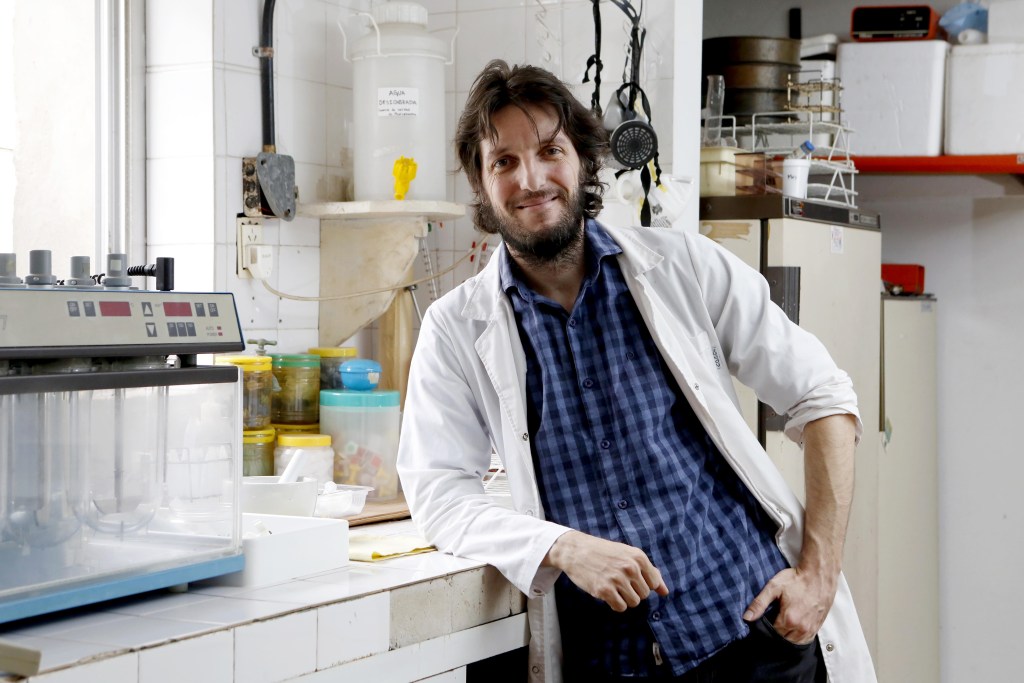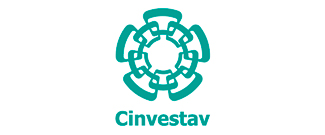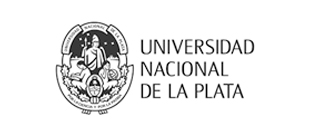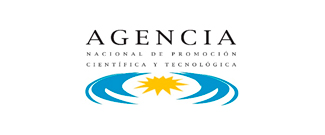- Anti-oxidant/anti-inflamatory nanoparticles to protect the brain from excess electrophysiology and to mitigate damage post-crisis
- Characterization of the didys552 zebrafish mutant line (mutation in snc1lab gene) and set up of an efficacy drug screening assay using reference compounds
- Cell Therapy with GABAergic interneuron precursors for Early Infantil Epileptic Encephalopathies (S. Dravet, S. West y S. Stxbp1)
- Creation of a therapeutic drug monitoring (TDM) unit for the optimization of the Dravet syndrome pharmacological therapy
- Design, synthesis and pharmacological evaluation of new neuroprotective agents oriented to the tratment of Dravet syndrome
- Efecto de campos magnéticos estáticos de intensidad moderada en modelos de epilepsia y síndrome de Dravet
- The effect of beta-caryophyllene treatment in a murine model of Dravet syndrome
- The endocannabinoid system study in Dravet syndrome
- Intrinsic neuronal excitability and spontaneous 1 activity underlie cortical abnormalities upon Nr2f1/COUP-TFI deficiency
- Investigating Epilepsy by Super-resolution Imaging of Synapses and the Extracellular Space in Live Brain Tissue
- Precision Medicine in Dravet Syndrome
- Reactive Neurogenesis and Gliogenesis in a Dravet Syndrome Mouse Model
Timeline: 2019-2021.
Proyect costs: 30000 Euros (2019-2021).
Cost 2019: 7000.
Scientific Groups: LIDeB, Facultad de Ciencias Exactas (Universidad Nacional de la Plata).
Dr. Alan Talevi
alantalevi@gmail.com
Telephone: +542214235333 ext 41
https://lideb.biol.unlp.edu.ar
@LIDeB_UNLP

Overall objective
Design and obtention of propylparaben analogues with anticonvulsant and neuroprotective activity, aimed at the treatment of Dravet syndrome.
Specific objectives
Computer-aided design of propylparaben analogues that allow highly selective blocking of Nav1.2.
Synthesis of the designed compounds.
Evaluation of the anticonvulsant activity of the obtained compounds in different animal models of epileptic crisis, including a model of drug-resistant seizure.
&Evaluation of the neuroprotective effect of the most promising candidates in an animal model of status epilepticus (model of lithium-pilocarpine in rat).
Finally, the compounds thus characterized will expand our chemistry library of anticonvulsant agents and will be made available to ApoyoDravet / INDRE to be evaluated in specific models of Dravet syndrome (Dravet flies and mice, zebrafish, etc).
Justification
Through computer-assisted discovery, our team identified that propylparaben, an ester of para-aminobenzoic acid, has anticonvulsant effects in different epileptic seizure models (Talevi et al., J Comput-Aided Mol Des 2007, Pisera-Fuster et al., Synapse 2017). It was verified that the mechanism of action of the family of parabens involves the use-dependent blockade of voltage-operated sodium channels (Lara-Valderrábano et al., Neurotoxicology 2016; Enrique et al., In the process of publication) and that it has anticonvulsant and neuroprotective effects in animal models of status epilepticus (see, for example, Santana-Gómez et al., Neurotoxicology, 2017). The pharmacological information compiled with respect to propylparaben allowed us, in 2018, the obtention of a patent of invention linked to its neuroprotective effects.
It is interesting to note that parabens have a remarkably versatile chemistry, which makes it possible to foresee obtaining numerous and diverse analogues in a relatively short time.
Although the use of sodium channel blocking antiepileptic drugs such as phenytoin or carbamazepine is contraindicated as therapy for Dravet syndrome (since their administration exacerbates seizures), it should be noted that such drugs lack selectivity towards specific subtypes of sodium channels (Meldrum & Rogawski, Neurotherapeutics 2007; Eijkelkamp et al., Brain 2012). In other words, classical blockers of sodium channels would aggravate seizures in Dravet syndrome by indiscriminately blocking the isoforms Nav1.2 (associated with the propagation of excitatory stimuli) and Nav1.1 (associated with activation of inhibitory pathways, and with diminished function in Dravet due to mutations in the SCN1A gene).
The notable advances in the field of the treatment of neuropathic and inflammatory pain using selective blockers of Nav1.7 sodium channels indicate that, although challenging, the development of drugs with differential specificity towards specific subtypes of this type of ion channels is possible (Theile & Cummings, Front Pharmacol 2011, Bankar et al., Cell Reports 2018, Corry, Sci Reports 2018)
Taking this into account, the present project proposes the use of rational drug design methods to take advantage of the interesting pharmacological profile of parabens and its great chemical versatility, obtaining analogues with a highly selective effect on Nav1.2 (i.e., which do not block Nav1.1 ) that may potentially be used in the therapy of Dravet syndrome.
Brief state-of-the-art
While classical blockers of sodium channels show relatively little selectivity (low specificity towards specific subtypes of sodium channels), the development of highly selective blockers would allow a range of new therapeutic applications, with an improved safety profile (see, for example, example, Corry B. Physical basis of specificity and delayed binding of a subtype selective sodium channel inhibitor, Scientific Reports, 2018).
Our research unit has identified, through computational search, the anticonvulsant effects of the esters of p-hydroxybenzoic acid (Talevi et al., J Computer Aided Mol Des 2007). Subsequently, through an extensive collaboration with the teams of the Dr. Luisa Rocha (Department of Pharmacobiology of the Center for Research and Advanced Studies, Mexico) and Dr. Sandra Orozco (Medical Research Unit in Neurological Diseases of the Mexican Social Security Institute) we have deepen our pharmacological knowledge on this group of compounds, a process that led to a patent of invention (MX2013011437A) associated with the neuroprotective effects of propylparaben against status epilepticus. Parabens effects on the excitability of neurons were studied using patch clamp techniques (Lara-Valderrábano et al., Neurotoxicology 2016; Enrique et al., In publication), observing that they are capable of blocking, in a use-dependent manner, the rapid inactivation sodium currents. It was then observed that propylparaben can suppress the epileptiform activity induced by 4-aminopyridine (Lara-Valderrábano, Epilepsy Res. 2017). In another study, we observed that the administration of propylparaben to rats after status epilepticus induced by pilocarpine reduces the short- and long-term consequences of the status (Santana-Gómez et al., Neurotoxicology 2017). The effect of administering a single dose of propylparaben after status was initially evaluated: compared to animals receiving diazepam, animals receiving propylparaben + diazepam showed a 126% reduction in extracellular levels of glutamate in the hippocampus, which was associated with an increase in low frequency oscillations and a decrease in high frequency oscillations, in addition to decreasing neuronal damage at the hippocampal level. In a second experiment, it was observed that subchronic administration of propylparaben during the post-status period reduces glutamate release and damage at the dentate gyrus. Similar results were obtained more recently when co-administering propylparaben and levetiracetam (Santana-Gómez et al., Neurochem, 2018). We also verified the effect anticonvulsively in the PTZ model in zebrafish (Pisera-Fuster et al., Synapse 2017). These results suggest that this class of chemical agents could be used to suppress the status epilepticus and prevent the neuronal damage caused by it.On the other hand, the chemical versatility of parabens allows the efficient exploration of structure-activity relationships, giving rise to the possibility of progressing towards the synthesis of active compounds with greater selectivity and improved safety and pharmacokinetic profiles. In particular, this project considers the development and pharmacological evaluation of analogues with: a) improved pharmacokinetics and; b) high selectivity for the Nav1.2 sodium channel subtype (ie, with high affinity for Nav1.2 and low affinity for the rest of the subtypes, in particular, Nav1.1).
Estos resultados nos sugieren que esta clase de agentes químicos podrían ser utilizados para suprimir el status epilepticus y prevenir el daño neuronal ocasionado por el mismo. Por otro lado, la versatilidad química de los parabenos permite explorar de manera relativamente eficiente las relaciones estructura-actividad, dando lugar a la posibilidad de avanzar hacia la síntesis de compuestos activos con mayor selectividad y perfiles de seguridad y farmacocinéticos mejorados. En particular, en este proyecto se plantea el desarrollo y evaluación farmacológica de análogos con: a) farmacocinética mejorada y; b) alta selectividad por el subtipo de canales de sodio Nav1.2 (es decir, con alta afinidad por Nav1.2 y baja afinidad por el resto de los subtipos, en particular, Nav1.1). Debe destacarse que el grupo de trabajo posee experiencia en el modelado computacional de canales de sodio operados por voltaje, lo que permite guiar de manera racional y eficiente la síntesis de análogos selectivos (ver, por ejemplo. Palestro et al. Searching for New Leads To Treat Epilepsy: Target-Based Virtual Screening for the Discovery of Anticonvulsant Agents. J Chem. Ind. Model. 2018). Ya hemos desarrollados modelos de los canales de sodio Nav1.1 y Nav1.2, los cuales están inmediatamente disponibles para guiar el diseño de inhibidores selectivos.
It should be noted that the working group has experience in the computational modelling of voltage-operated sodium channels operated, which allows to guide in a rational and efficient way the synthesis of selective analogues (see, for example, Palestro et al., Searching for New Leads To Treat Epilepsy: Target-Based Virtual Screening for the Discovery of Anticonvulsant Agents, J Chem. Ind. Model, 2018). Currently, we have already modelled Nav1.1 and Nav1.2; such models are immediately available to guide the design of selective inhibitors.
Hypotheses
Hypothesis 1: it is possible to obtain highly selective blocking agents of voltage-operated sodium channels, with high affinity for the Nav1.2 subtype and low affinity for the rest of the subtypes. We will test this hypothesis by developing analogues of anticonvulsant and neuroprotective parabens already reported by our team, exploiting the chemical versatility of this family of compounds.
Hypothesis 2: Parabens with high affinity for Nav1.2 and low affinity for Nav1.1 could be interesting therapeutic alternatives for the treatment of episodes of status epilepticus associated with Dravet syndrome, contributing to their suppression and the attenuation of its pathophysiological consequences.
Project phases
We will divide the project into two phases: a first phase lasting one year will be aimed at the design and synthesis of selective parabens analogues towards Nav1.2. In a second phase we will move to the pharmacological evaluation of the obtained compounds in acute and subchronic animal models of seizures, and in the status model epilepticus induced by lithium-pilocarpine (the latter will be developed through our collaboration with the group of Dr. Luisa Rocha, from CINVESTAV, Mexico).
In parallel to the second stage, i.e. in 2020, the compounds will be made available to other groups associated with ApoyoDravet willing to evaluate them in other models specific to this disorder, such as Dravet flies and mice.
Timeline and milestones
- Months 1-3: Computer-aided design of the candidates to be synthesized.
- Months: 3-12: Obtention and chemical characterization of the designed candidates.
- Milestone: Obtention of at least ten propylparaben analogues in the quantities required for subsequent pharmacological characterization.
- Months 12-24: Evaluation of candidates in different models of seizure and epilepsy: MES, 6Hz, acute model mercaptopropionic acid, PTZ, MP23, status epilepticus induced by lithium pilocarpine. [The obtained compounds will be offered, in parallel, for evaluation in Dravet models available in other research groups associated with the network].
- Milestone: Evaluation of 100% of the compounds in acute models of epileptic crisis. Evaluation of the best 2-3 candidates in a subchronic model of drug-resistant epileptic crisis (MP23) and lithium-pilocarpine model.
Importance of the project
The computational modelling of the different subtypes of voltage-operated sodium channels (with emphasis on Nav1.1 and Nav1.2) could also serves as a basis for the design of compounds with other mechanisms of action (e.g. positive modulators of NAv1).
Expected results
- Obtention of anticonvulsant and neuroprotective chemical compounds, capable of supressing status epilepticus episodes, with high Nav1.2 selectivity (and low Nav1.1 affinity).
Besides from funds already obtained from the University of La Plata and the Argentinean Agency of Science and Technology, additional Euros 5000 would be required in 2019.
In 2020, it would be ideal to count with Euros 12000 to hire a postdoctoral researcher fully dedicated to the project.
cooperative groups


sponsors



